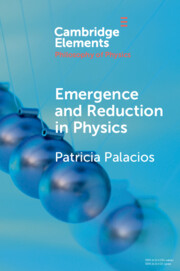Element contents
Emergence and Reduction in Physics
Published online by Cambridge University Press: 06 September 2022
Summary
- Type
- Element
- Information
- Online ISBN: 9781108901017Publisher: Cambridge University PressPrint publication: 06 October 2022
References
- 18
- Cited by

